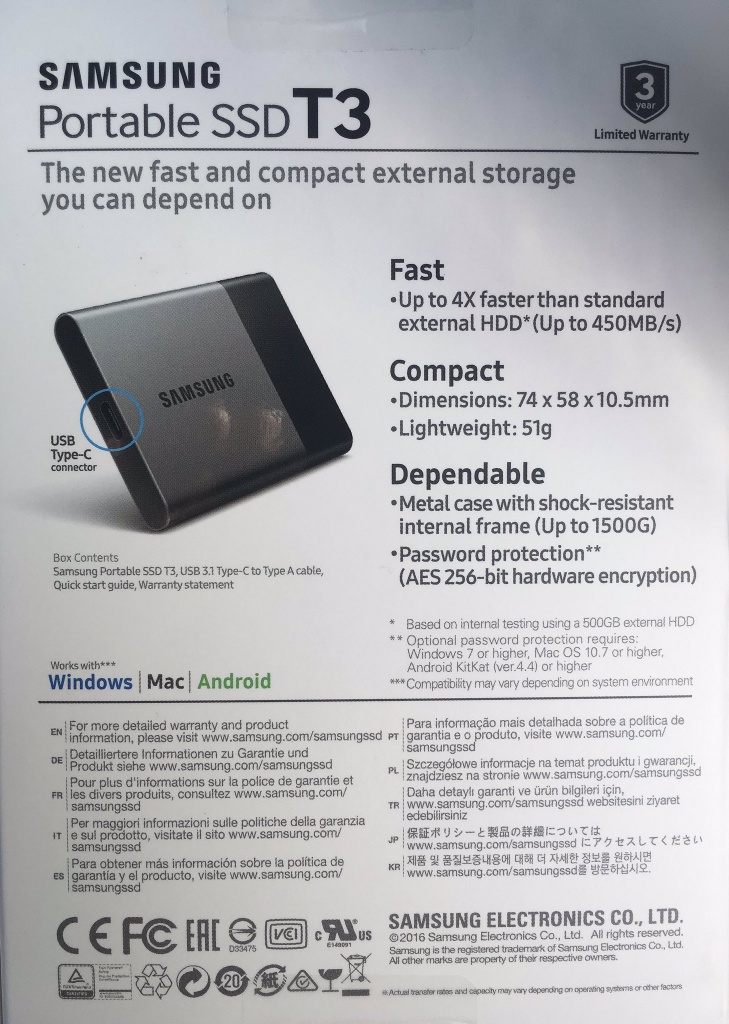Introduction
Caveat: The Surface Pro 4 M3 has a slower internal drive than Pro 4 models with 256GB or larger drives.
In 2016 Samsung released the Samsung Portable T3 SSD, a super fast external SSD drive (no external power supply required).
I have a Surface Pro 4 M3 128GB, so picked one up to increase capacity.
Historically, external drives have usually been slower than internal drives, how does the Samsung T3 250GB, connected via USB 3.0/3.1 Gen 1, compare to the internal drive?
During testing via DiskSpd, it was noted that write performance was low on the external drive.
However, once the windows setting to enable it as a permanent drive (which requires it to be ejected before unplugging it in order to prevent data the possibility of data loss on the external drive) was enabled, write performance increased significantly, outperforming the internal drive (which had the same windows caching settings etc available).
The Crystal & Atto benchmarks include this setting, whilst the DiskSpd benchmarks include with and without this setting enabled.
Crystal Disk Mark
Internal drive (left), Samsung (right)
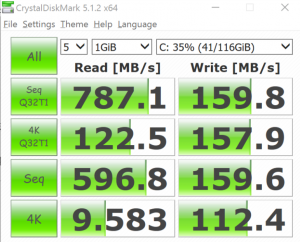
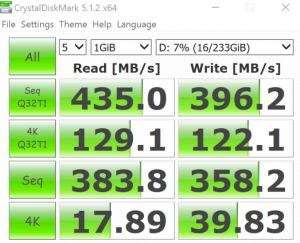
Atto Disk Benchmark
Internal drive (left), Samsung (right). Write throughput is significantly higher with the external drive.
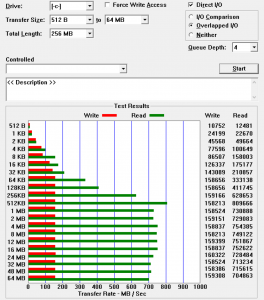
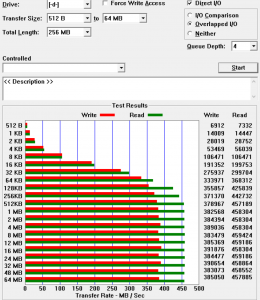
Read performance (via DiskSpd)
Random read test (4k, Queue Length: 4, Threads: 4)
diskspd.exe -c16G -d60 -L -w0 -t4 -o4 -b4K -r -L testfile.dat
Sequential read test (4k, Queue Length: 4, Threads: 1)
diskspd.exe -c16G -d60 -L -w0 -t1 -o4 -b4K -L testfile.dat
Sequential read test (4k, Queue Length: 8, Threads: 1)
diskspd.exe -c16G -d60 -L -w0 -t1 -o8 -b4K -L testfile.dat
The same test repeated, but with a larger queue to ensure getting the maximum from the drives, the Samsung got faster, but the internal drive got slower.
Write performance (via DiskSpd)
The write performance of the external drive was very low, thus the tests included enabling the windows setting “Better Performance” on the external drive.
Random write test (4k, Queue Length: 4, Threads: 4)
diskspd.exe -c16G -d60 -L -w100 -t4 -o4 -b4K -r -L testfile.dat
Sequential write test (4k, Queue Length: 4, Threads: 1)
diskspd.exe -c16G -d60 -L -w100 -t1 -o4 -b4K -L testfile.dat
Conclusion
Provided that the drive was set to use “Better Performance”, the external Samsung S3 exceeds the performance of the internal drive in every scenario, with the added bonus of significantly lower CPU usage required for read operations.
Thus it is a great way to easily increase laptop storage capacity whilst retaining comparable storage performance, providing the computer has a USB 3.0 or 3.1 Gen 1 port or better.
